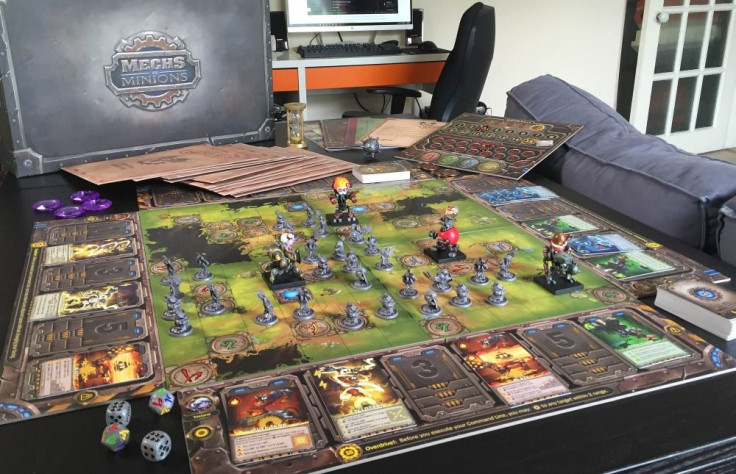Riot Games just announced its newest product, a board game called Mechs vs. Minions. The company behind League of Legends has finally made another game, earning the “s” in “Riot Games” in the process. Chris Cantrell, producer of Mechs vs. Minions, spoke with iDigitalTimes about the game and why Riot decided that a board game was the right thing to create.
Development
First, Cantrell needed to find a man named Stone.
“We brought on a designer, a guy named Stone Librande who is an accomplished video game designer and done lots of other stuff,” Cantrell said. “But in his spare time, he had created board games for his family for years and gave them out on Christmas. They were all one-offs and were never published.”
Librande was the lead developer of Diablo 3 at Blizzard and the creative director of SimCity at EA, so Cantrell and his team knew he made great games. “We brought Stone over to Riot, tried one of his games and that became the foundation of Mechs vs. Minions ” Cantrell said.
“Then we brought it in house and messed around with it, in some ways butchered it and tried to level it out and add other systems to it,” Cantrell said. “Sometimes we’d try and be incredibly wrong, and then we tried again and we were still wrong, but we were closer.”
Librande developed the stackable programming mechanic, where players can play cards to give their mechs commands, like turn right or shoot a flamethrower. The cards are placed in a line, and are activated left to right. Cards with the same “power type” can be stacked, allowing mechs to pull off complicated maneuvers.
This allowed Mechs vs. Minions to have a sense of complexity to it, while also being easy to pick up. There are 40 to 50 designers at Riot who helped work on the game. “Being able to tap into that brain trust kind of kept us grounded,” Cantrell chuckled.
About a year and a half into development, Cantrell thought he had a finished board game. Cantrell truly believed the game was done:
“I was confident, ready to send the game out to manufacturing,” Cantrell admitted. “Looking back on it, I’m embarrassed by it.”
At that point, Riot brought Tom Vasel of Dice Gaming and Quentin Smith at Shut Up And Sit Down (where the original game was leaked) to try out the original version.
“Tom gave us a ton of insightful tips to really streamline the experience,” Cantrell said. “He thought the game was great. And then we already had Quentin on the books to fly out and I remember someone asking me ‘do you still want him?’ and I said yeah because I wanted to meet him.”
“Quentin came out and said ‘I like it, but I’m not sure I’ll ever play it again’ which wasn’t exactly what we wanted to hear.”
Smith recommended turning away from a one board system to a modular board, something that a campaign could be created around so that each game was different. “You could just look around the room and see everyone nodding because we realized he was right ... Instead of designing one game, we signed on to make ten,” Cantrell said.
Ultimately, It took three years of development to make Mechs vs. Minions.

Riot’s Philosophy
Cantrell wanted to make a game that resonated with board game fans and League of Legends players. As Cantrell put it, Mechs vs. Minions is a “love letter to both those groups.”
“We are always looking for stuff a traditional game house wouldn’t do, because we are gamers and want to make stuff that excites us. We are always pursuing stuff we are passionate about, that might resonate with our players.” In the past, Riot released a heavy metal album , motion comics and a bunch of 8-bit homages to classic games like Rampage.
Making Mechs vs. Minions was a similar labor of love for the designers. The board game’s potential success would only be a drop in the billion-dollar bucket Riot makes in revenue from skin sales.
“This was never really a huge money making play,” Cantrell explained. “Even if this game was the most successful board game of all time, it wouldn’t really move the needle much for Riot.”
“This was just something we were really proud of and passionate about. We wanted to introduce League players to this amazing, burgeoning hobby. And if we could even get a handful of those people to try other modern board games, if they’re gamers, they will really love what they see.”







![Best Gaming Mouse For Gamers With Smaller Hands [2025]](https://d.player.one/en/full/227430/best-gaming-mouse-gamers-smaller-hands-2025.png?w=380&h=275&f=fdcf47c1c5fc58d1e41d3be505c12568)










